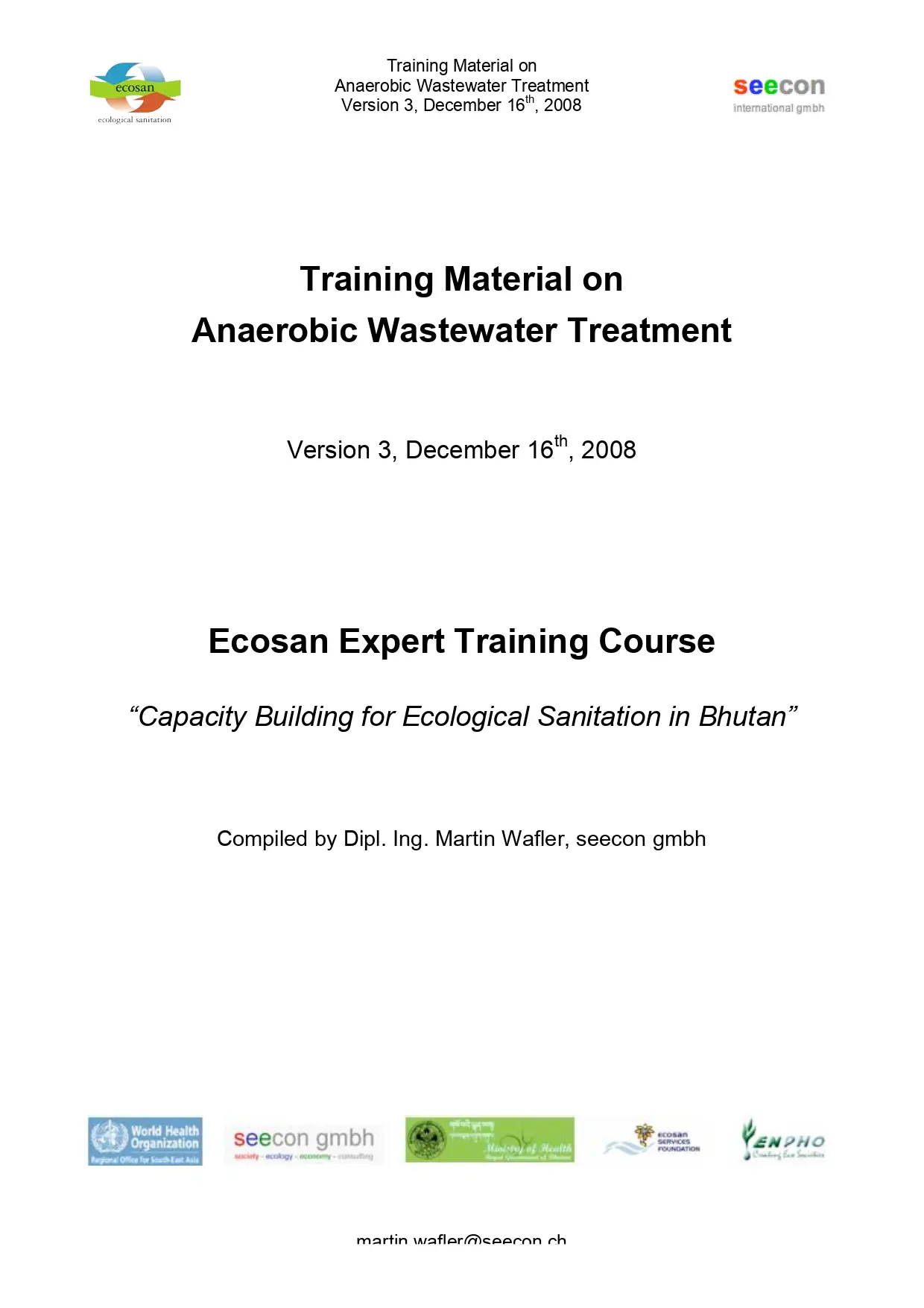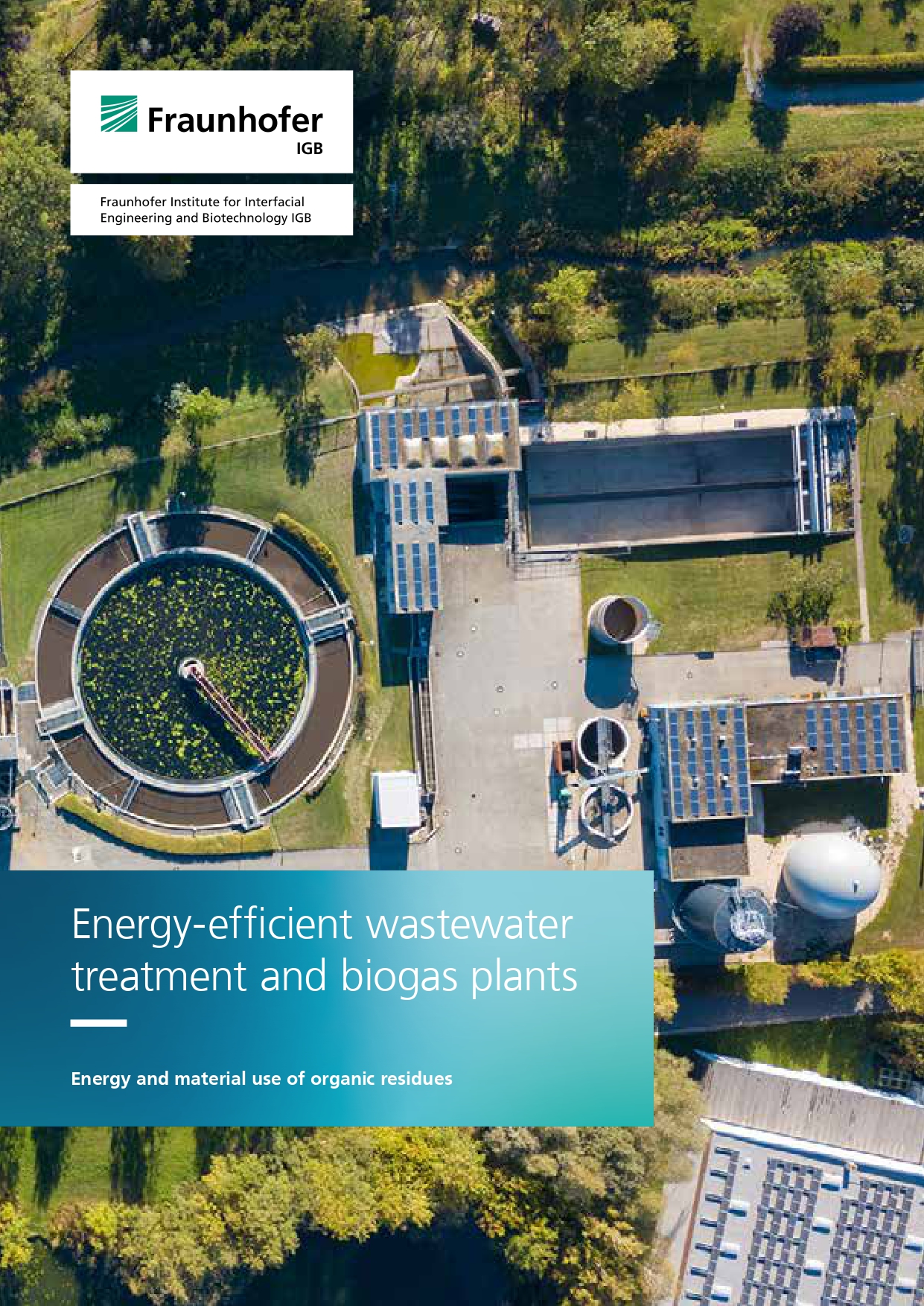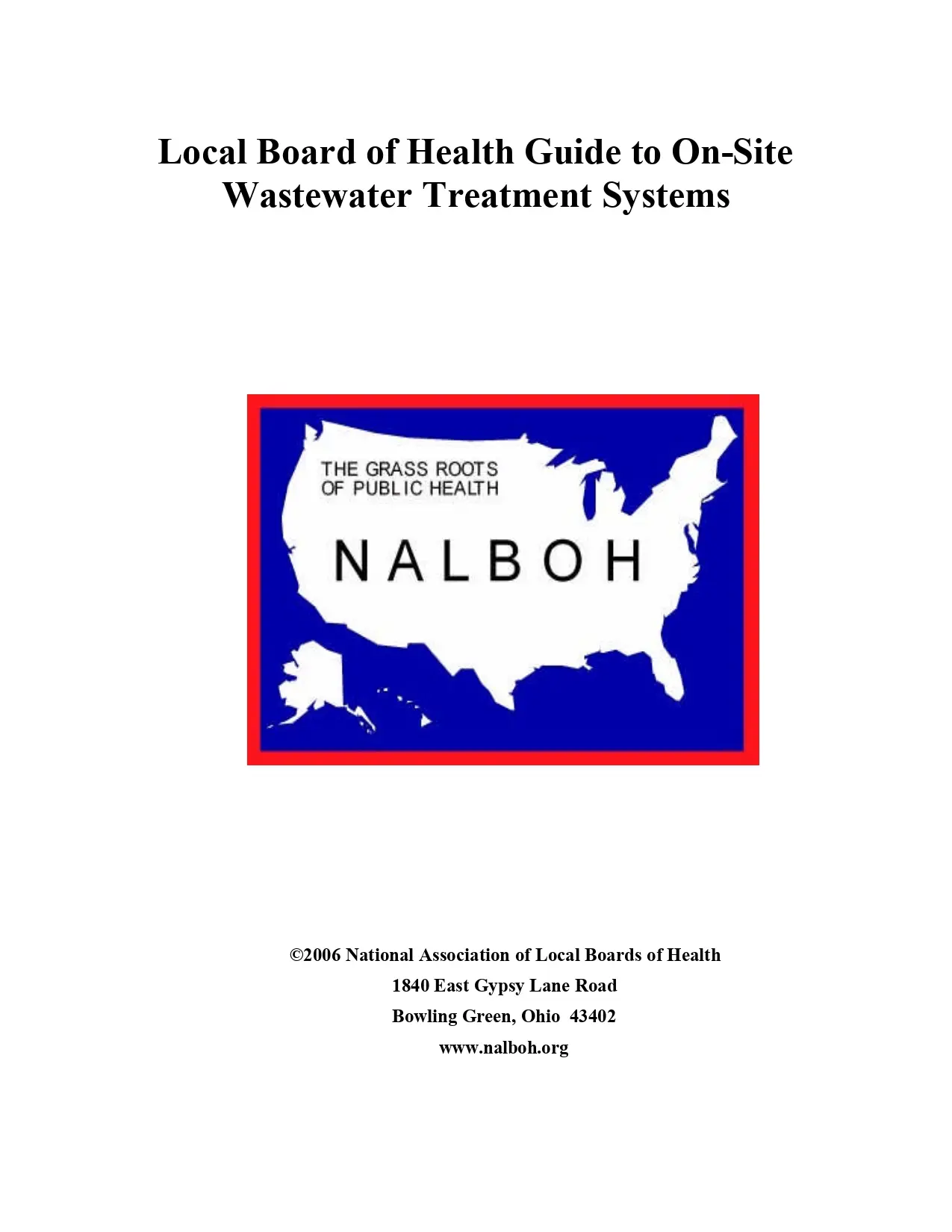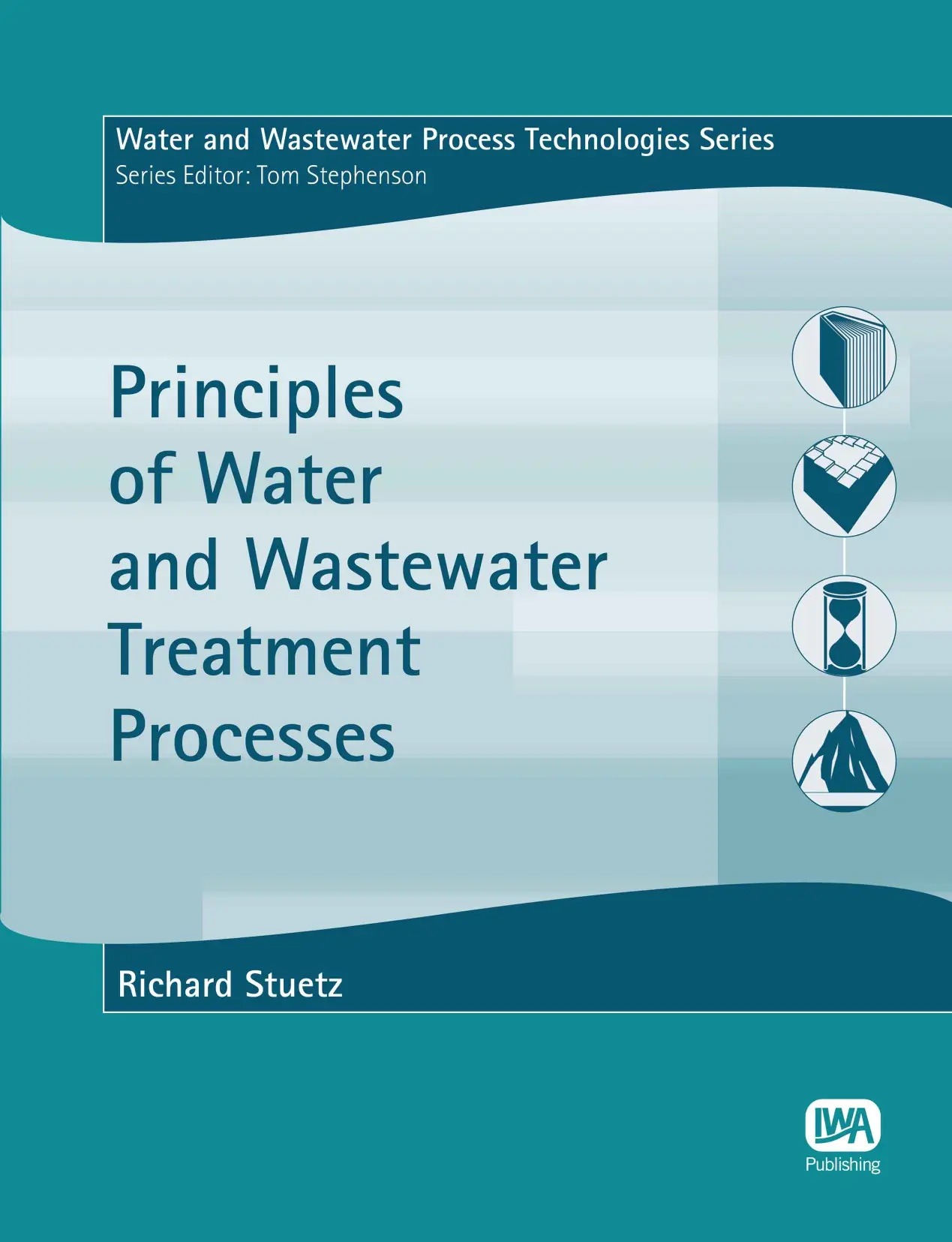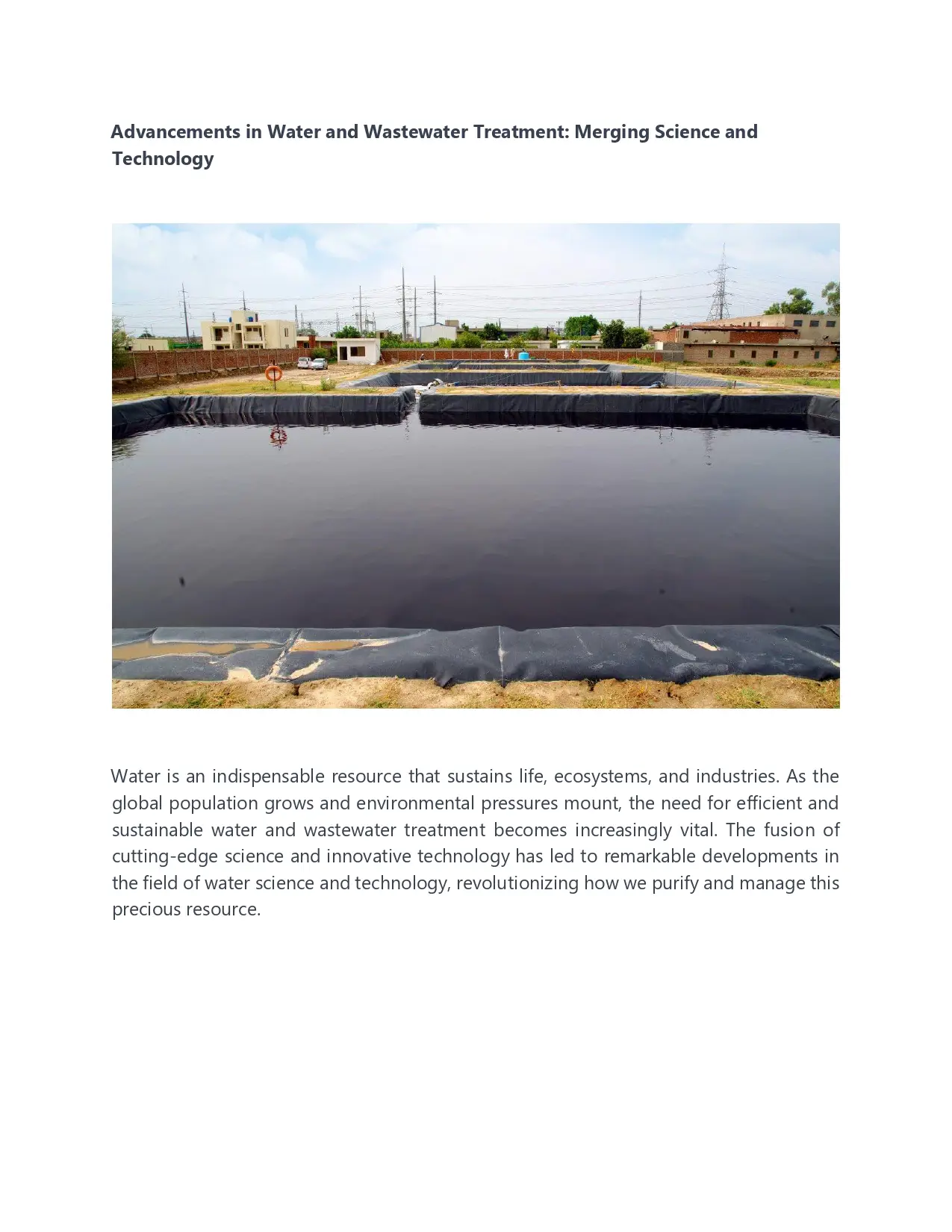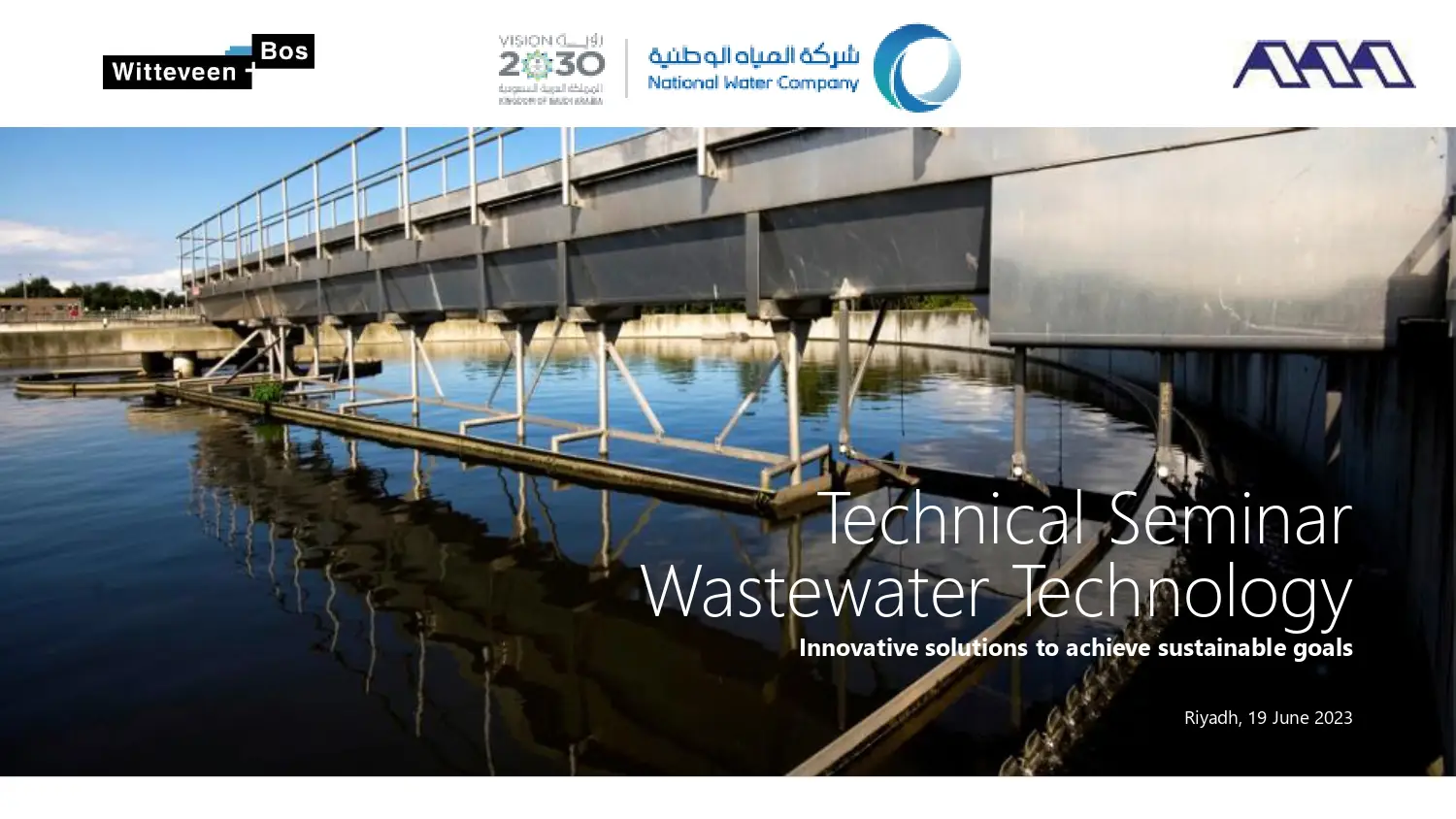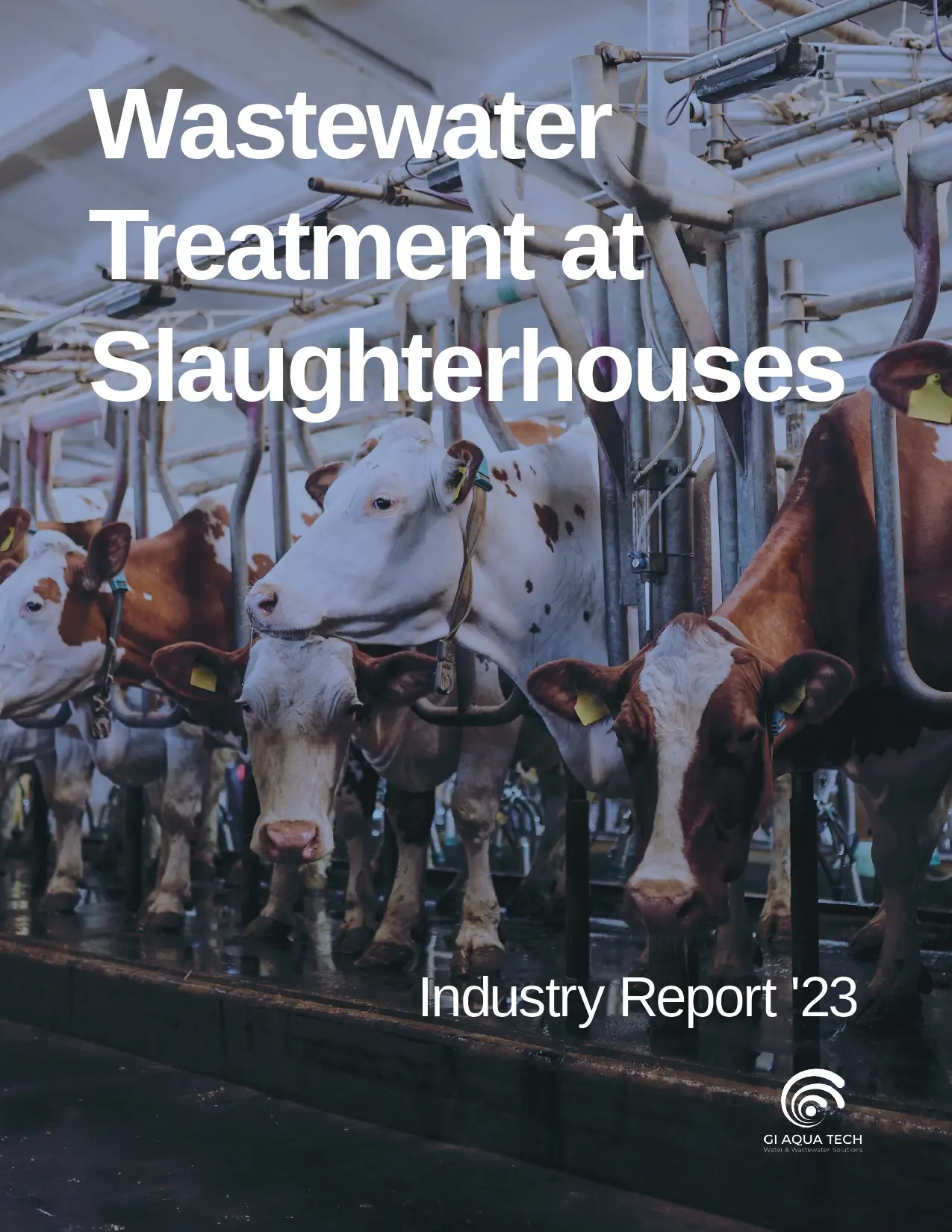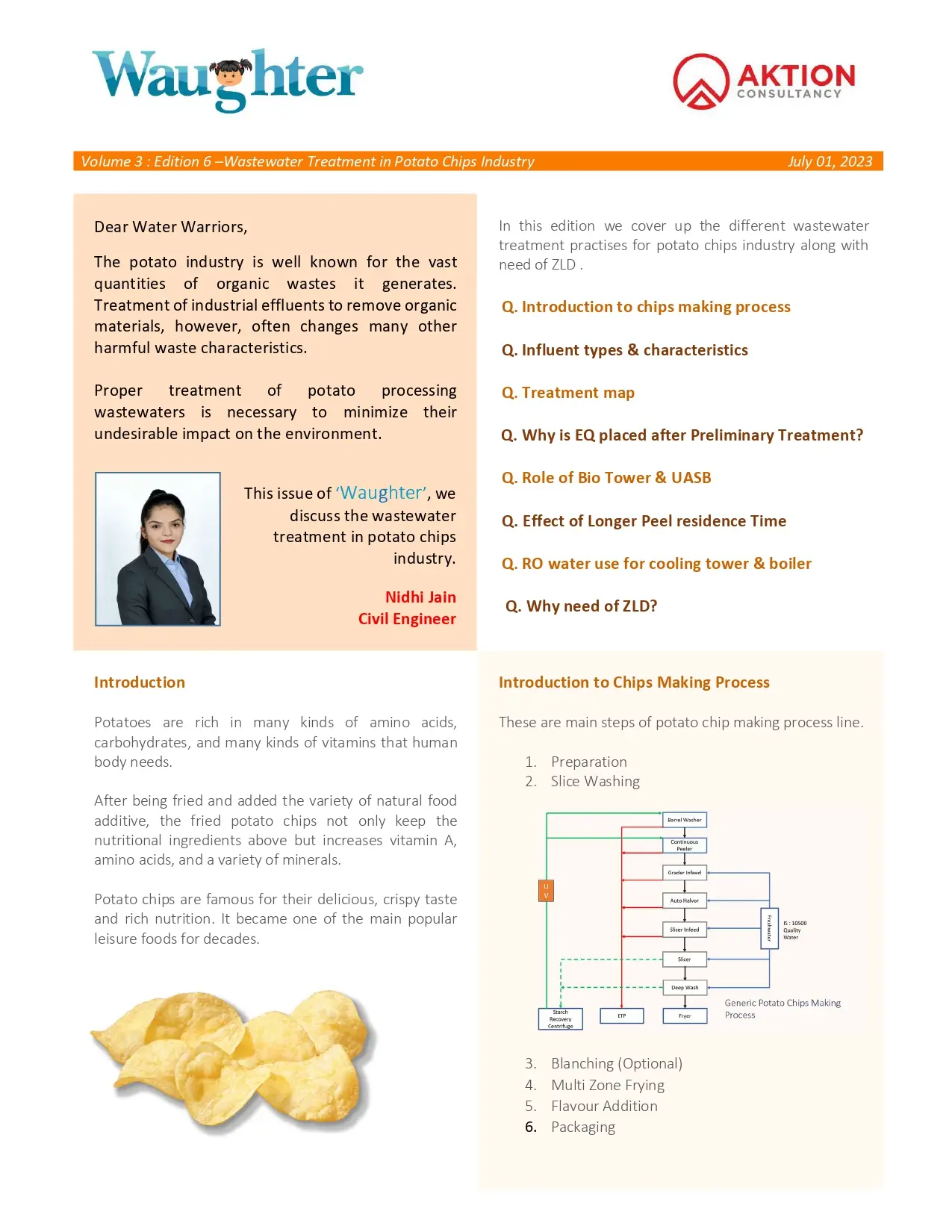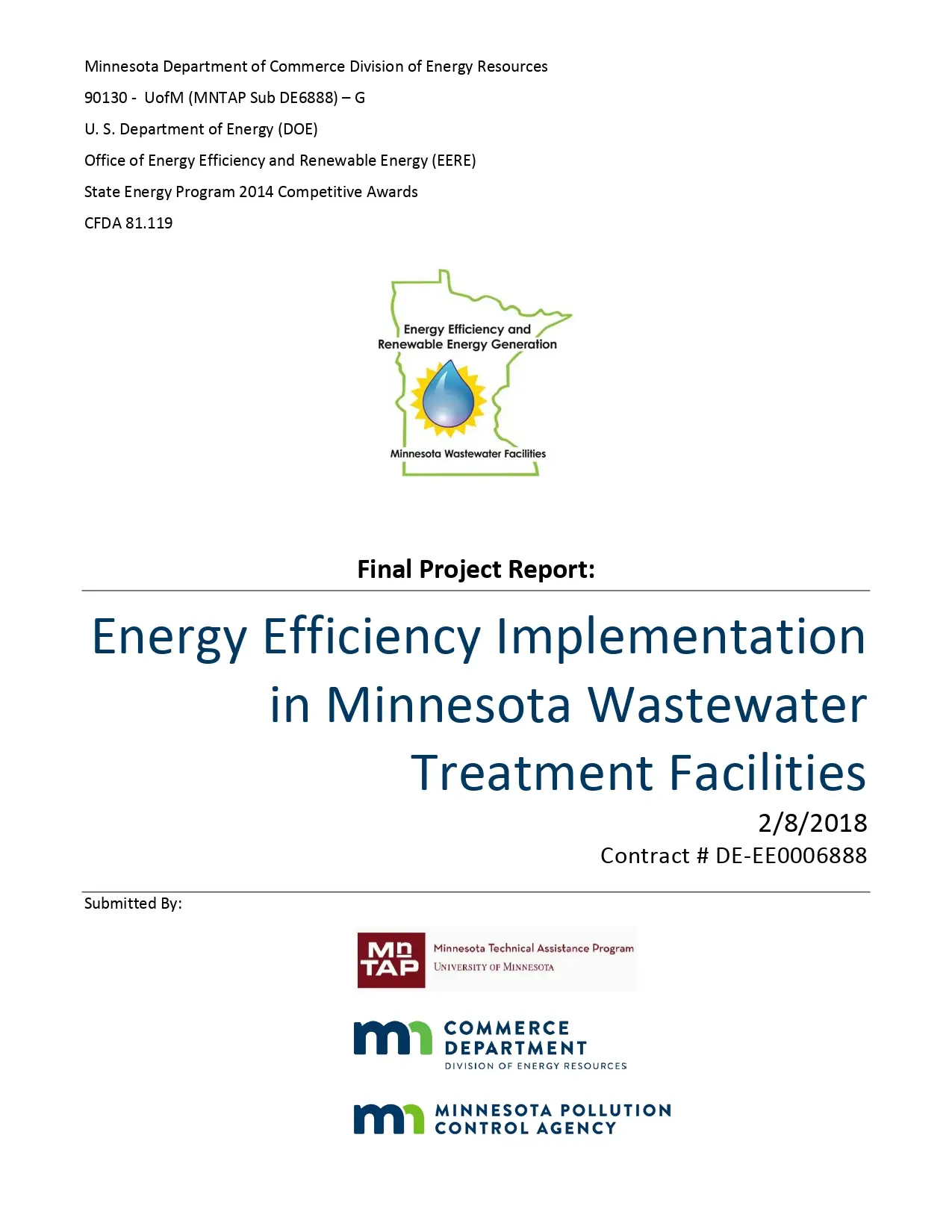Energy-Efficient Wastewater Treatment and Biogas Plants
In view of the finite nature of fossil and biological raw materials, it is becoming increasingly important for companies, municipalities and states to use existing resources more efficiently and intelligently and to recover ingredients for material or energy use in accordance with the circular economy approach.
Energy-Efficient Wastewater Treatment and Biogas Plants
In view of the finite nature of fossil and biological raw materials, it is becoming increasingly important for companies, municipalities and states to use existing resources more efficiently and intelligently and to recover ingredients for material or energy use in accordance with the circular economy approach.
Unlocking The Potential Of Wastewater
On a global scale, less than half of all wastewater is collected and less than one fifth is treated. This has led to severe environmental degradation of many inland and sea waters around the world. Increasing water scarcity and population growth underline the importance of treating and understanding the value of wastewater. The United Nations' Sustainable Development Goal 6 aims to halve the proportion of untreated wastewater discharged into our water bodies by 2030. In achieving this goal, it is important also to focus on energy efficiency and energy recovery in the design of new and upgrade of existing wastewater treatment plants.
Unlocking The Potential Of Wastewater
On a global scale, less than half of all wastewater is collected and less than one fifth is treated. This has led to severe environmental degradation of many inland and sea waters around the world. Increasing water scarcity and population growth underline the importance of treating and understanding the value of wastewater. The United Nations' Sustainable Development Goal 6 aims to halve the proportion of untreated wastewater discharged into our water bodies by 2030. In achieving this goal, it is important also to focus on energy efficiency and energy recovery in the design of new and upgrade of existing wastewater treatment plants.
Local Board of Health Guide to On-Site Wastewater Treatment Systems
Introduction
The health of a community and its water resources must be protected from the harmful effects of inadequately treated wastewater. These harmful effects include waterborne diseases or other illnesses and the pollution of rivers, streams, lakes, groundwater supplies, or other water bodies. All persons generate wastewater, also known as sewage, as they go about their daily activities of washing dishes and clothes, showering and bathing, and using the toilet. To protect public health and environmental quality, wastewater must be cleaned (treated) before it is returned to the environment for further use. Before the establishment of fixed dwellings, humans left their wastes (feces and urine) in the environment where they lived. As people formed settled communities, wastes accumulated in homes, creating foul smells and unclean conditions. In the nineteenth century, increases in disease resulting from overcrowding led researchers to discover the link between disease and unclean water.
Local Board of Health Guide to On-Site Wastewater Treatment Systems
Introduction
The health of a community and its water resources must be protected from the harmful effects of inadequately treated wastewater. These harmful effects include waterborne diseases or other illnesses and the pollution of rivers, streams, lakes, groundwater supplies, or other water bodies. All persons generate wastewater, also known as sewage, as they go about their daily activities of washing dishes and clothes, showering and bathing, and using the toilet. To protect public health and environmental quality, wastewater must be cleaned (treated) before it is returned to the environment for further use. Before the establishment of fixed dwellings, humans left their wastes (feces and urine) in the environment where they lived. As people formed settled communities, wastes accumulated in homes, creating foul smells and unclean conditions. In the nineteenth century, increases in disease resulting from overcrowding led researchers to discover the link between disease and unclean water.
Principle of Water and Wastewater Treatment Processes
This series of texts, termed modules, is designed to provide an education in water and wastewater treatment from a process engineering perspective. At the end, you should have a thorough understanding of the design, operation and management of water and wastewater treatment processes. This might be the treatment of an industrial effluent to a standard acceptable for disposal to sewer, or treatment of municipal sewage to meet an environmental discharge consent, or the production of water suitable for drinking abstracted from a river. In almost all cases, a single ‘‘process’’, usually termed a unit operation, will not be able to achieve the required level of treatment. Treatment is achieved through linking the right unit operations in a flowsheet.
Principle of Water and Wastewater Treatment Processes
This series of texts, termed modules, is designed to provide an education in water and wastewater treatment from a process engineering perspective. At the end, you should have a thorough understanding of the design, operation and management of water and wastewater treatment processes. This might be the treatment of an industrial effluent to a standard acceptable for disposal to sewer, or treatment of municipal sewage to meet an environmental discharge consent, or the production of water suitable for drinking abstracted from a river. In almost all cases, a single ‘‘process’’, usually termed a unit operation, will not be able to achieve the required level of treatment. Treatment is achieved through linking the right unit operations in a flowsheet.
Advancements in Water and Wastewater Treatment: Merging Science and Technology
Water is an indispensable resource that sustains life, ecosystems, and industries. As the global population grows and environmental pressures mount, the need for efficient and sustainable water and wastewater treatment becomes increasingly vital. The fusion of cutting-edge science and innovative technology has led to remarkable developments in the field of water science and technology, revolutionizing how we purify and manage this precious resource.
Advancements in Water and Wastewater Treatment: Merging Science and Technology
Water is an indispensable resource that sustains life, ecosystems, and industries. As the global population grows and environmental pressures mount, the need for efficient and sustainable water and wastewater treatment becomes increasingly vital. The fusion of cutting-edge science and innovative technology has led to remarkable developments in the field of water science and technology, revolutionizing how we purify and manage this precious resource.
Wastewater Treatment at Slaughterhouses
In the ever-evolving landscape of the slaughterhouse industry, wastewater management remains a critical challenge
that demands innovative, cost-effective, and environmentally friendly solutions. This report presents an in-depth industry analysis, highlighting key problems, challenges, and current market trends and exploring traditional and emerging wastewater treatment methodologies.
Wastewater Treatment at Slaughterhouses
In the ever-evolving landscape of the slaughterhouse industry, wastewater management remains a critical challenge
that demands innovative, cost-effective, and environmentally friendly solutions. This report presents an in-depth industry analysis, highlighting key problems, challenges, and current market trends and exploring traditional and emerging wastewater treatment methodologies.
Small-Scale Constructed Wetlands for Greywater and Total Domestic Wastewater Treatment
The use of these training materials is open to everyone. However, the responsibility for correct application lies with the user and respective legal or administrative regulations have to be followed. This applies in particular for the choice of the application rates and design parameters described in this training material, which should only be regarded as a rough 'guideline' and not as a manual.
Small-Scale Constructed Wetlands for Greywater and Total Domestic Wastewater Treatment
The use of these training materials is open to everyone. However, the responsibility for correct application lies with the user and respective legal or administrative regulations have to be followed. This applies in particular for the choice of the application rates and design parameters described in this training material, which should only be regarded as a rough 'guideline' and not as a manual.
Wastewater Treatment in Potato Chips Industry
Introduction
Potatoes are rich in many kinds of amino acids, carbohydrates, and many kinds of vitamins that human body needs.
After being fried and added the variety of natural food additive, the fried potato chips not only keep the nutritional ingredients above but increases vitamin A, amino acids, and a variety of minerals.
Wastewater Treatment in Potato Chips Industry
Introduction
Potatoes are rich in many kinds of amino acids, carbohydrates, and many kinds of vitamins that human body needs.
After being fried and added the variety of natural food additive, the fried potato chips not only keep the nutritional ingredients above but increases vitamin A, amino acids, and a variety of minerals.
Energy Efficiency Implementation in Minnesota Wastewater Treatment Facilities
Project Goal
Cities are under constant pressure to deliver improved services and at the same time manage operating costs. Delivering wastewater treatment services to communities can be a high cost effort due to the energy intensity of the operating equipment and the need to meet increasing effluent quality requirements for positive public health and environmental outcomes.
Energy Efficiency Implementation in Minnesota Wastewater Treatment Facilities
Project Goal
Cities are under constant pressure to deliver improved services and at the same time manage operating costs. Delivering wastewater treatment services to communities can be a high cost effort due to the energy intensity of the operating equipment and the need to meet increasing effluent quality requirements for positive public health and environmental outcomes.
Constructed Wetlands for Wastewater Treatment
Abstract: The first experiments using wetland macrophytes for wastewater treatment were carried out in Germany in the early 1950s. Since then, the constructed wetlands have evolved into a reliable wastewater treatment technology for various types of wastewater.
Constructed Wetlands for Wastewater Treatment
Abstract: The first experiments using wetland macrophytes for wastewater treatment were carried out in Germany in the early 1950s. Since then, the constructed wetlands have evolved into a reliable wastewater treatment technology for various types of wastewater.



